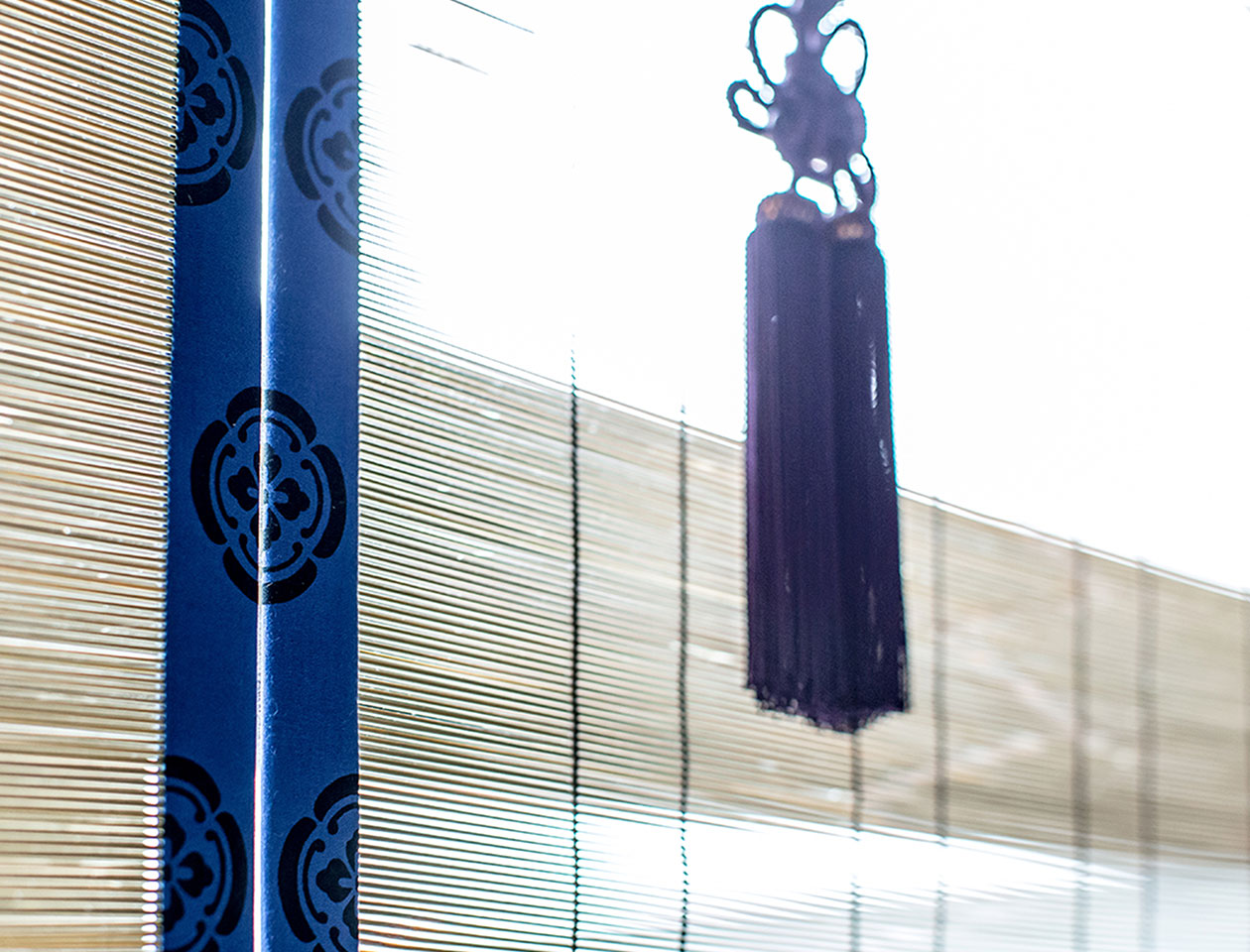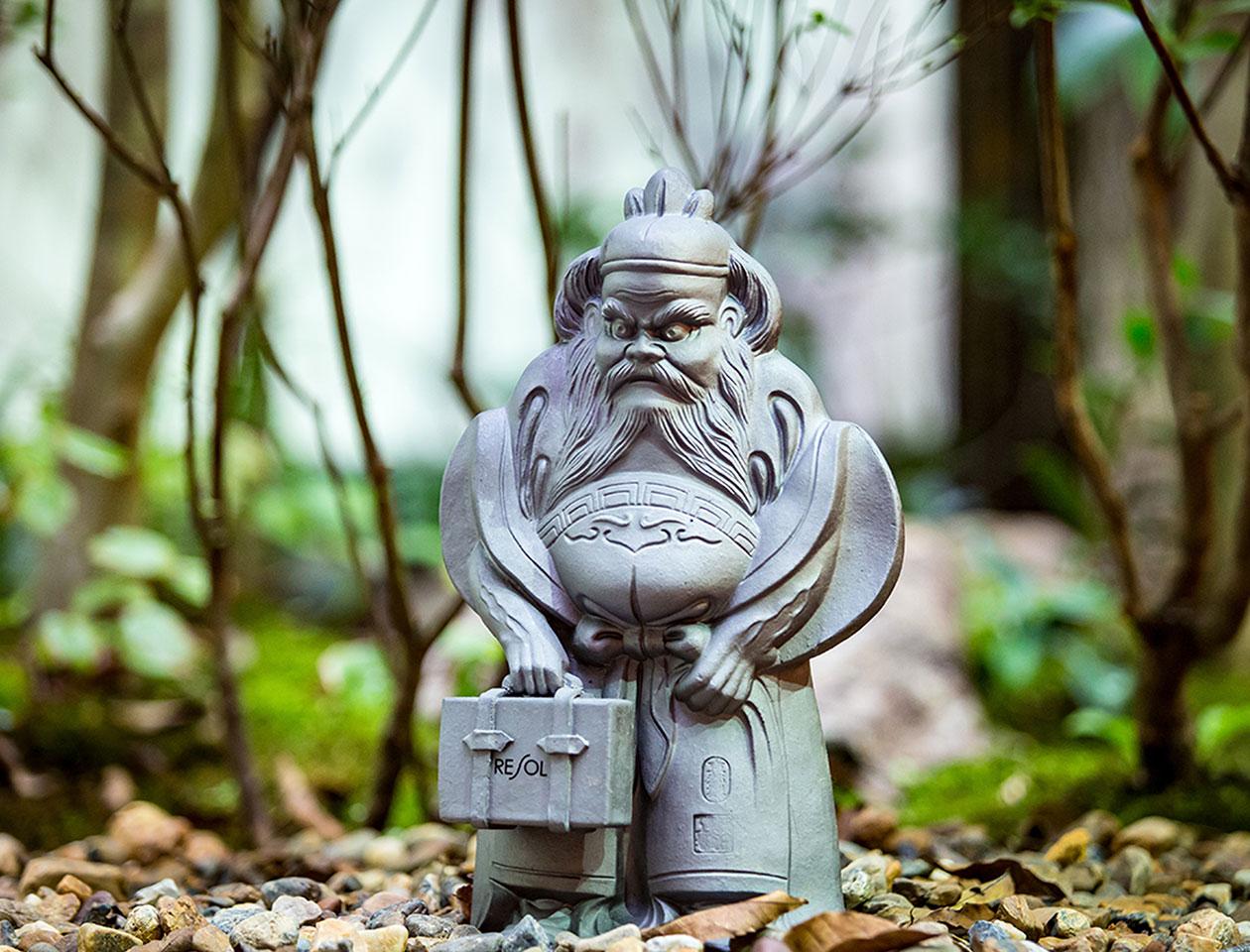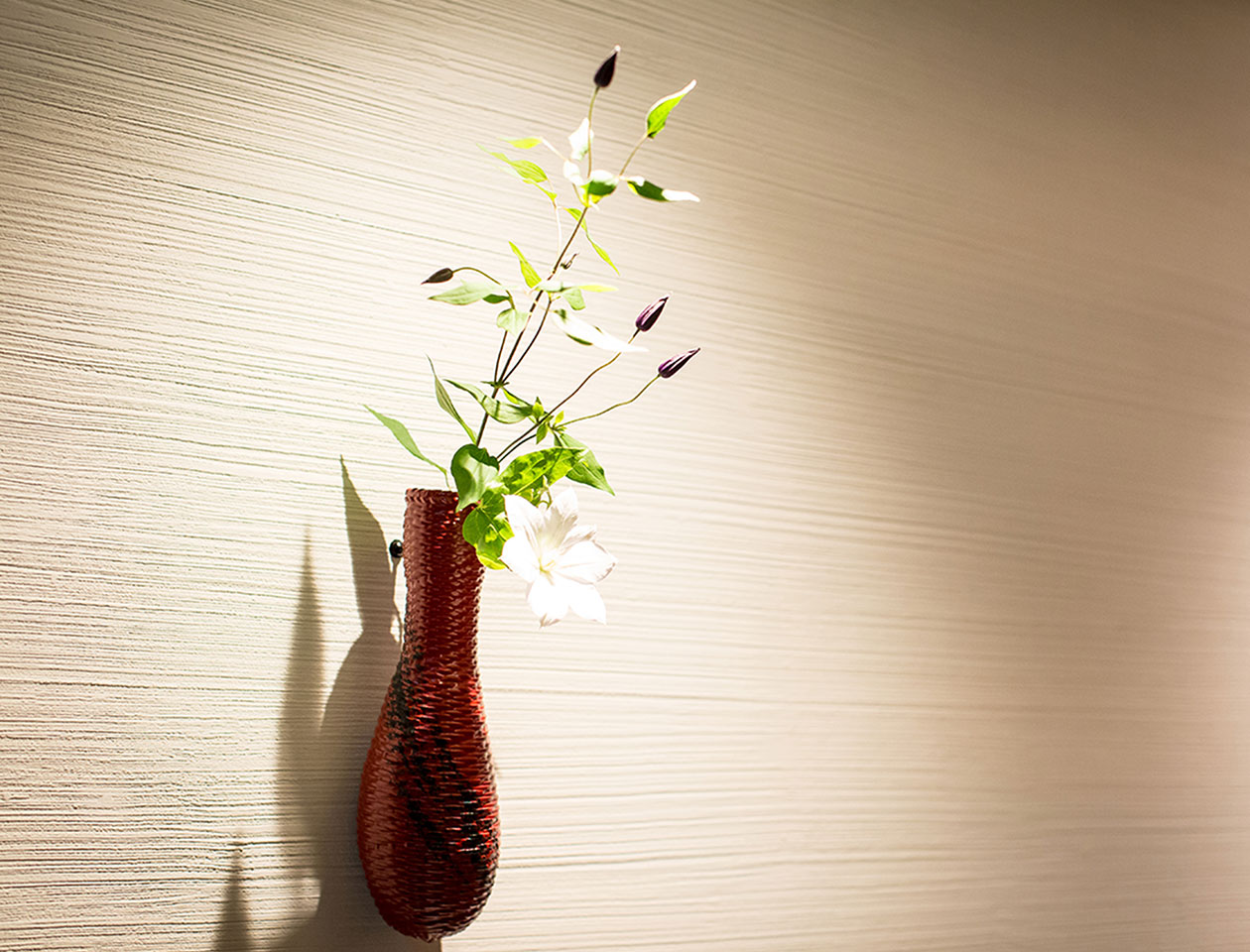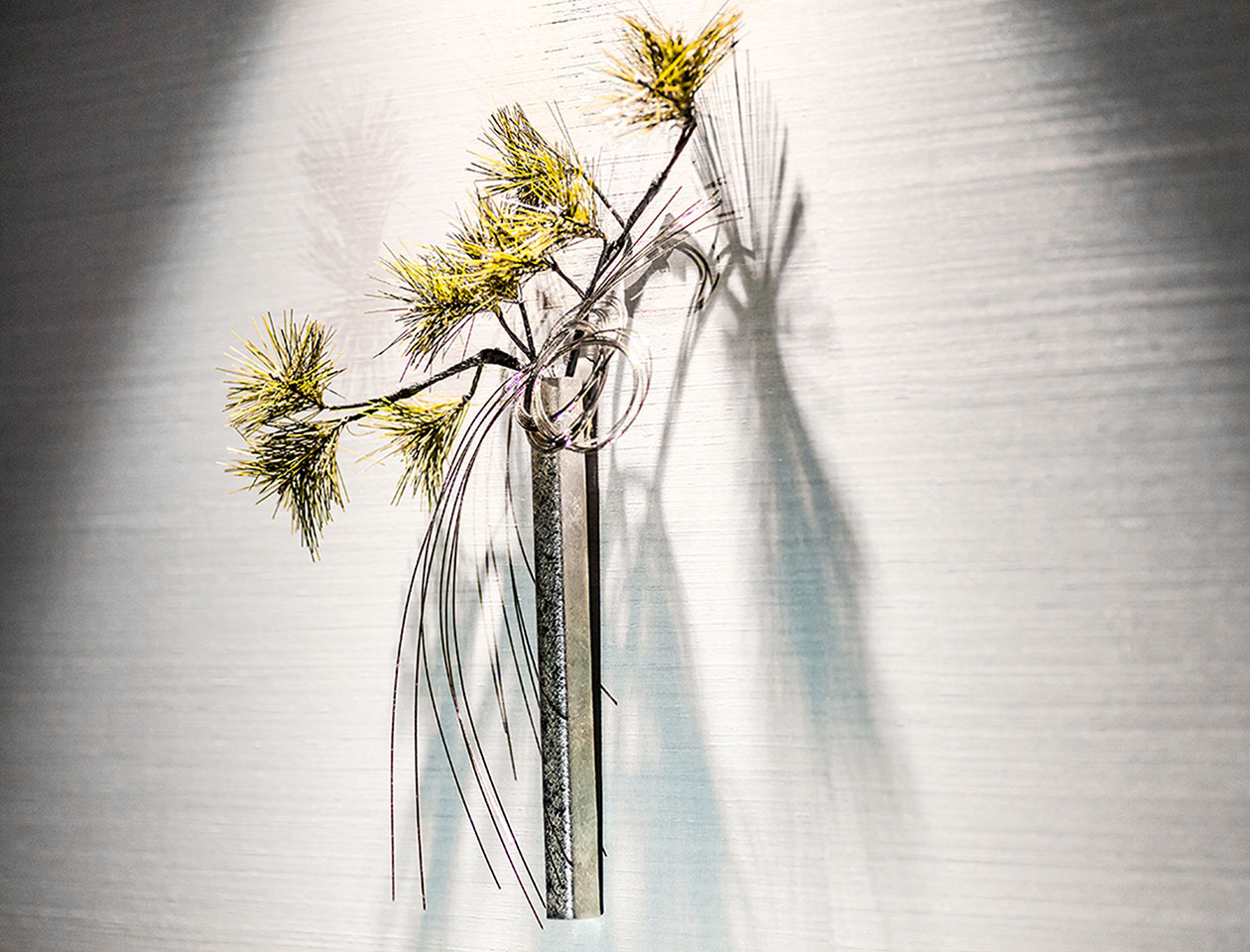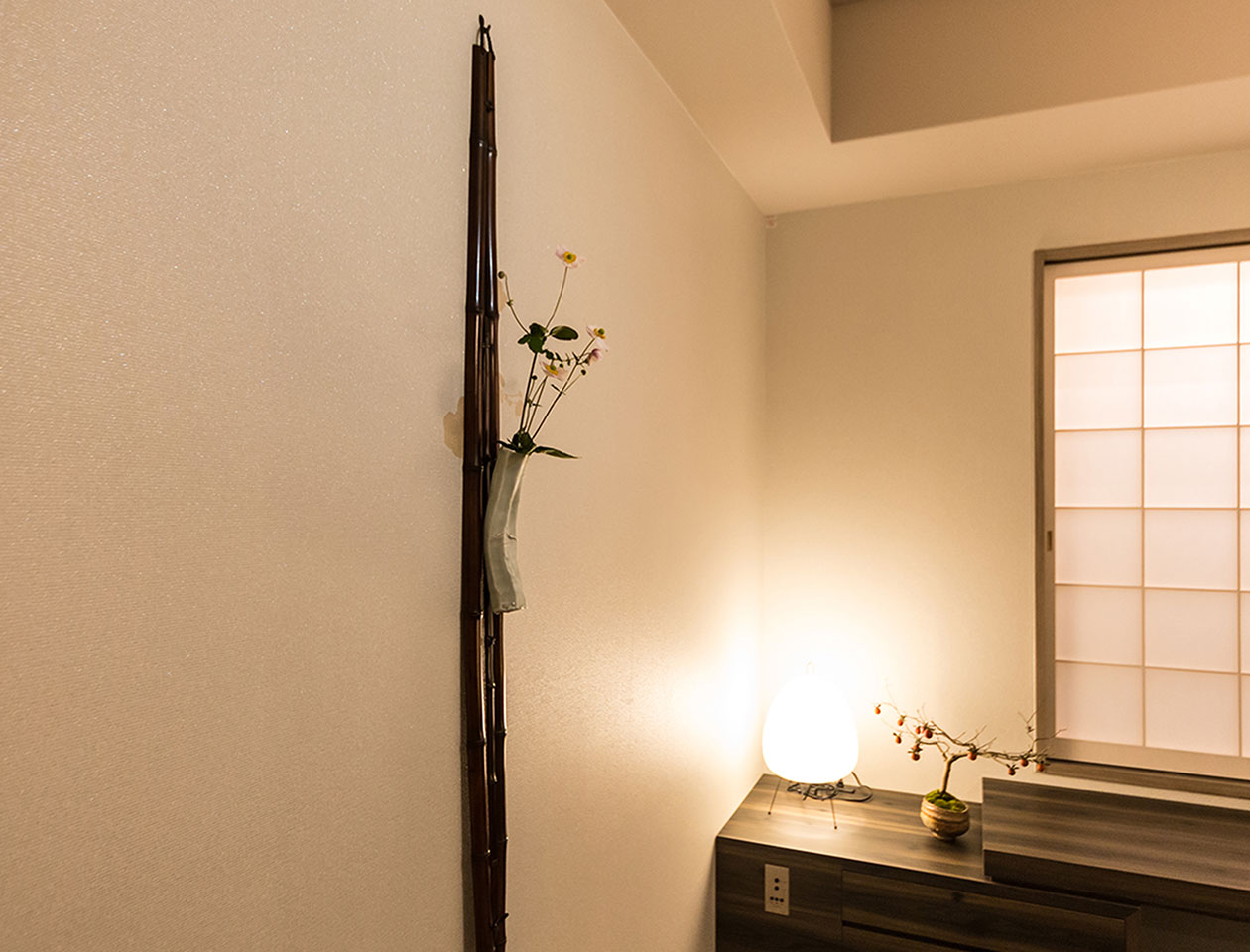ShitsuraiUnique design
The interior of the building unique design elements of traditional Kyoto craftsmanship to welcome guests.
The crafts made by long-established artisans who have been in business since the Edo period and who have been purveyors to the Kyoto Imperial Palace, the Imperial Household Agency, and World Heritage shrines and temples, further enhance the Kyoto atmosphere.
Escape from your everyday life and spend a relaxing time in the relaxing space created by Risor's unique design.
Misu
The hat is made entirely by hand using Higo bamboo, and the green fabric around the frame is dyed indigo blue with the traditional 'Kaminomon' crest printed on it, a traditional motif from the Heian period.
It has a flower-shaped diamond fastener and a Nishijin-woven tassel hanging from it.
The manufacturer is Misuhei, which was founded early in the Kansei era (1789-1800).
It is the culmination of a tradition that has been handed down for over 200 years. It has served as a purveyor to many places, including the Kyoto Imperial Palace, Yasaka Shrine, Kitano Tenmangu Shrine, and Sanzenin Temple, and is currently run by the eighth generation Maeda Heihachi.
It is clearly visible from inside but difficult to see from outside, but the courtyard seen through the green blinds is incredibly elegant.
Shoki
Shoki, the guardian deity that is an indispensable part of Kyoto's cityscape, is displayed on the rooftops to ward off evil spirits, misfortune, and academic success, but there is a legend that he can also exorcise demons.
The guardian deity above the main entrance is a replica of Shoki, while the one enshrined in the courtyard is an original made especially for the hotel, holding a travel case.
The production began in 1911, the year the company was founded.
The Asada Tile Factory is responsible for some of the roofs of famous shrines and temples such as Toji Temple and Nanzenji Temple, and produces traditional Kyoto tiles by the only craftsman, Asada Akihisa.
"Traveling Shoki" is so much fun.
Nuritake Hanakago
The bamboo basket is woven in the shape of a gorge, with an original pattern designed by Akahiko, and then woven into a bamboo saddle to give it strength, with washi paper pasted on the inside to express subtle movement. The bamboo skin is then peeled off to create a base, which is then coated with a black lacquer and then painted with vermilion. The black lacquer is then used to create a flowing effect, giving it a sense of elegance.
It was first manufactured in 1789, the first year of the Kansei era.
The Onishi Lacquerware Shop has been run by lacquer artist Otsuya Tsuneshichi for generations and is a regular craftsman at the Imperial Palace. The shop is located on Sanjo-dori, a street that was once the Tokaido Highway and was used by many travelers.
Works by Noriko Onishi, the ninth generation lacquer artist of Otsuya Tsuneshichi, and Naoko Ashida, a certified Kyoto craftsman.
Tin shiho-ka-kei chirin-zashi
The custom of incorporating seasonal flowers into hospitality spaces and daily life is said to date back to the Heian period.
Tin products will develop a unique texture and flavor as you use them for a long time.
We have installed flower vases on each floor that embody the beauty of Ibushi, or the wabi-sabi aesthetic that has been worn over the years.
The product was made by Seikado, a tinsmith founded in 1838 in the Teramachi Nijo area of Kyoto during the late Edo period.
Since then, we have been entrusted with producing ornaments for shrines and temples, as well as official items for the Imperial Court.
Suihatsu
A "suihatsu" is an ancient Japanese item made from wood or bamboo that can be used to display hanging vases, paper strips, decorative fans, etc.
It got its name from its shape resembling the plectrum of a biwa lute.
We welcome all of you with a drumstick that was made in Kyoto approximately 200 years ago.



